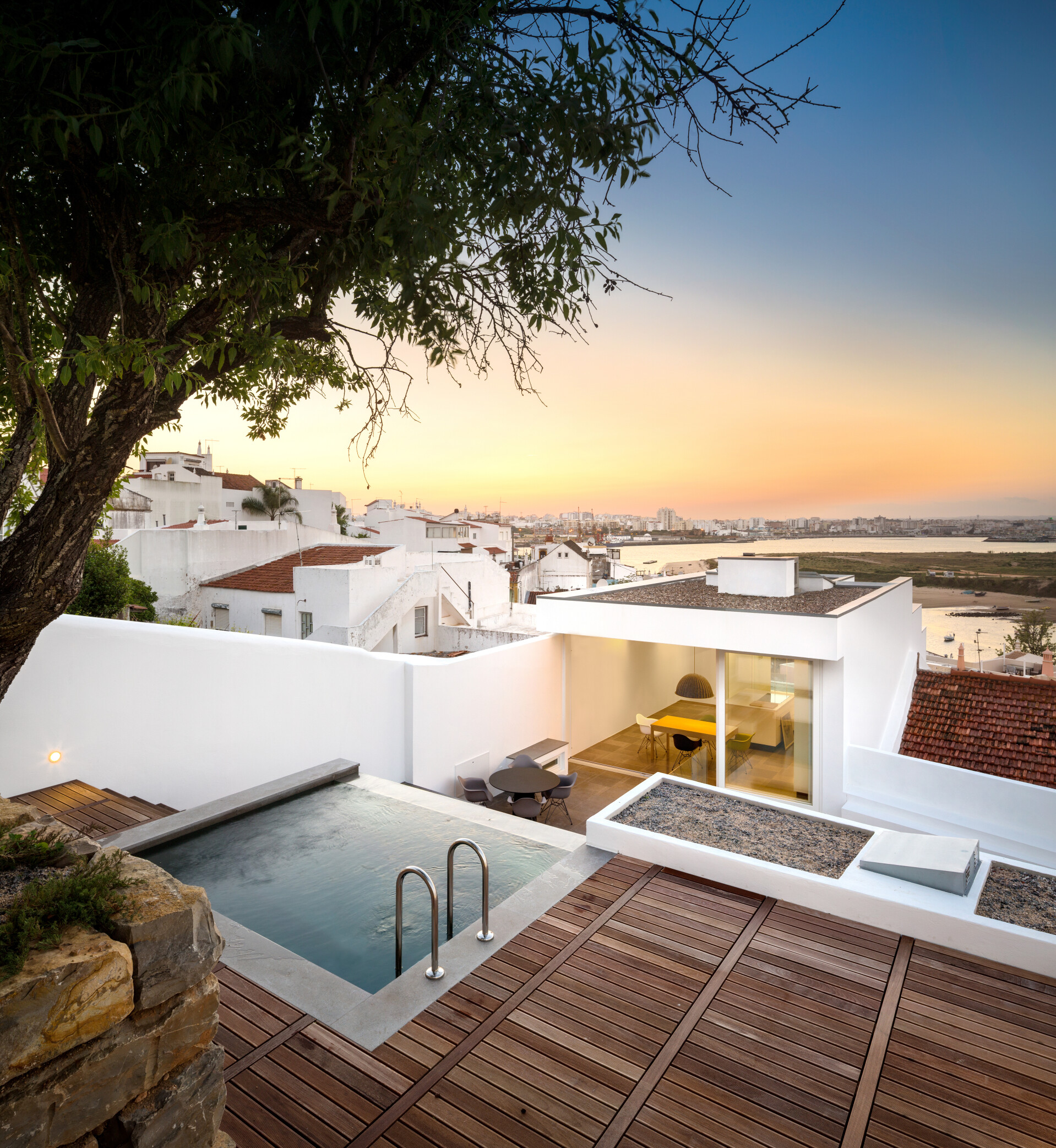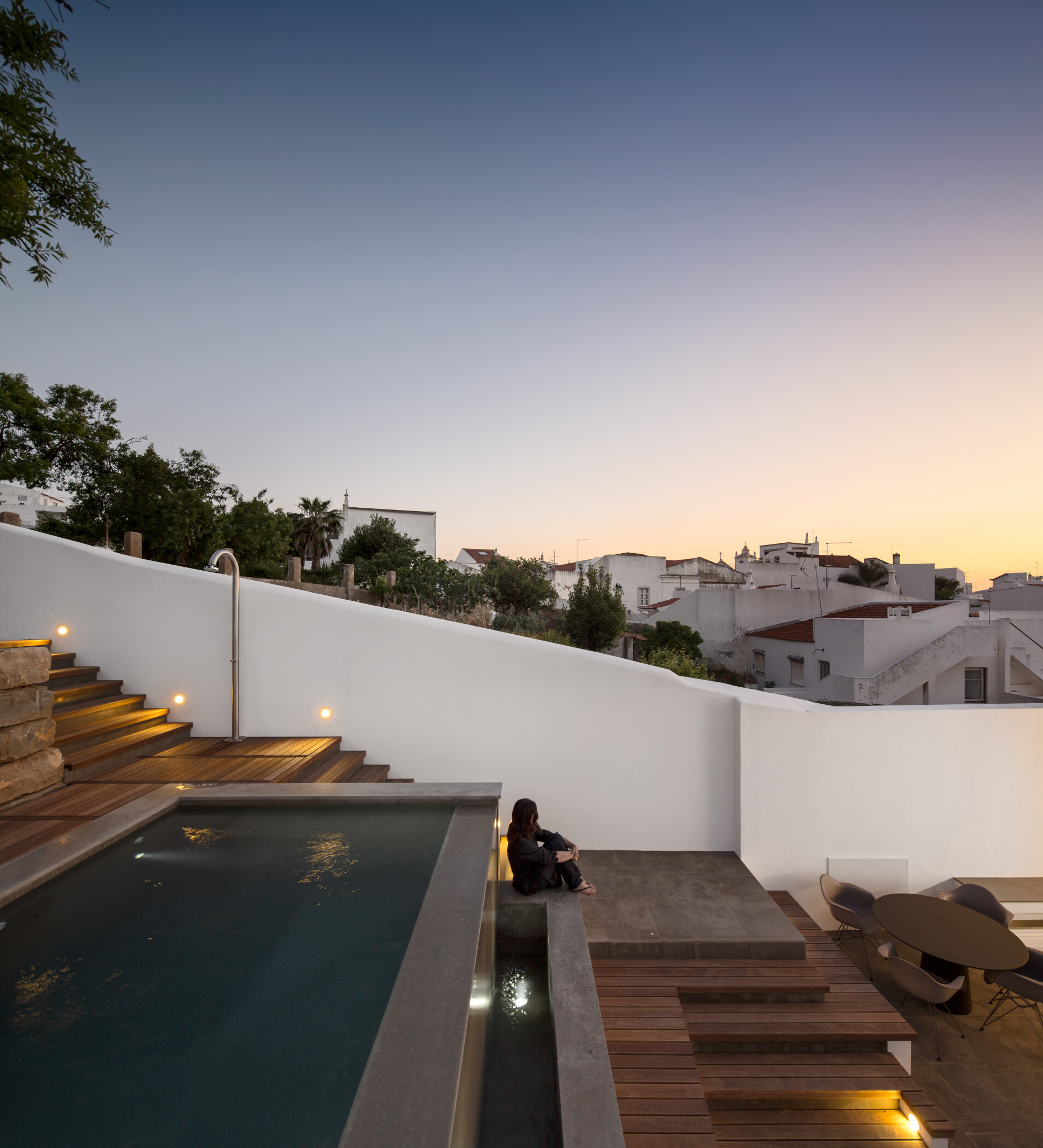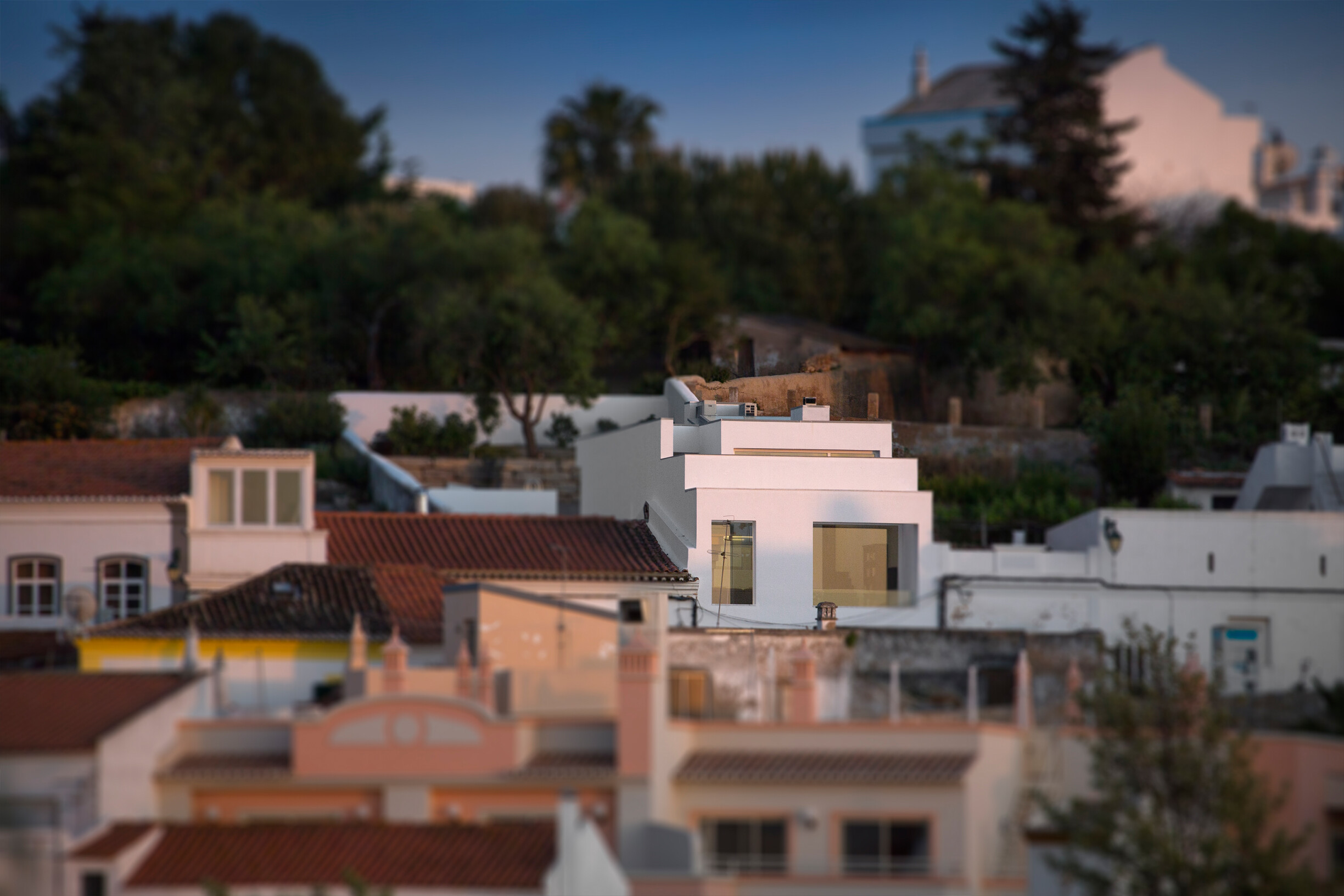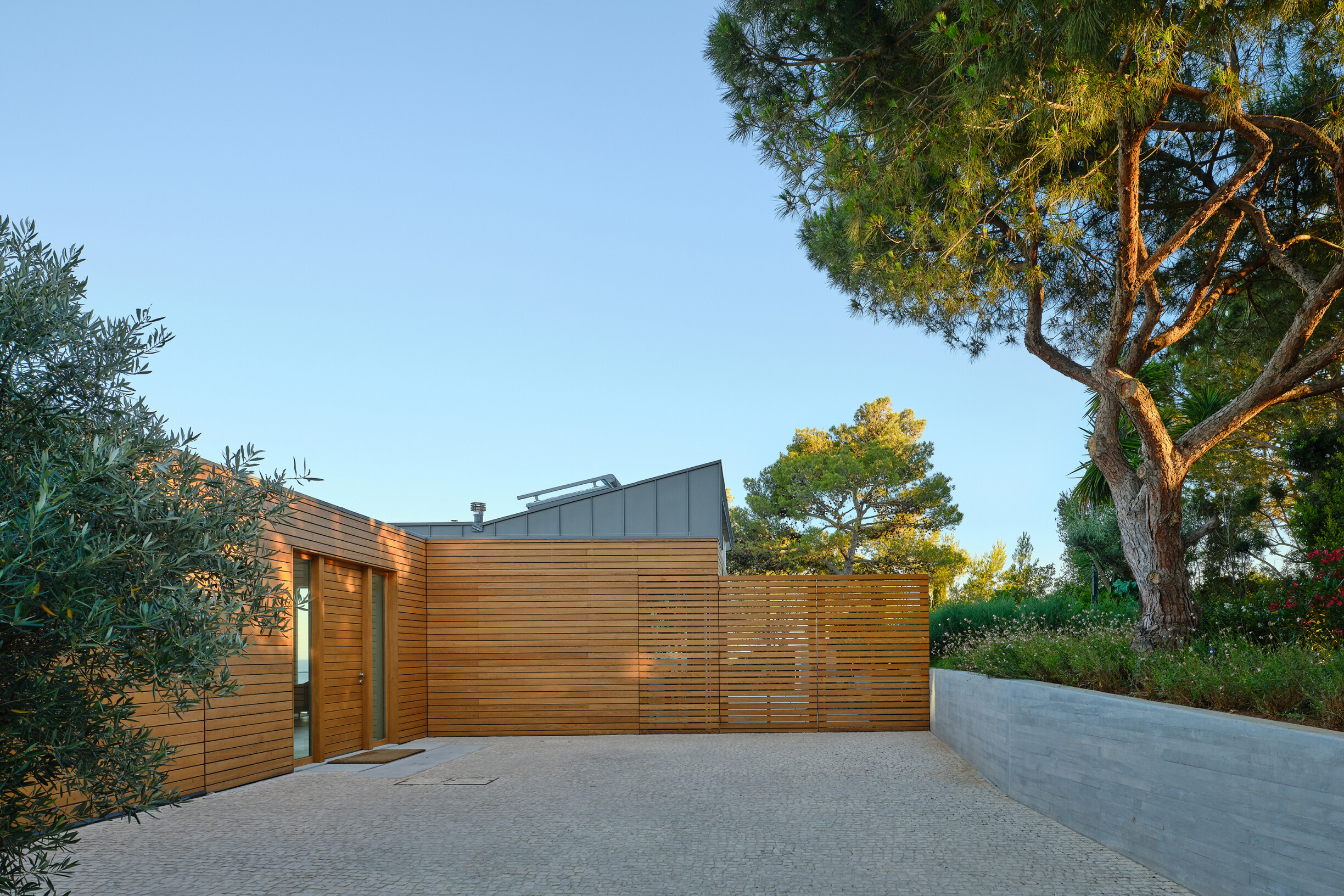Marlene Uldschmidt is a German architect whose early influences shaped her approach to architecture and craftsmanship. Growing up in a medieval town in Bavaria, surrounded by artisans and immersed in a rich environment of historical buildings, Marlene developed a deep appreciation for craftsmanship, heritage, and the art of restoration. Her father's work as a restorative painter and her grandfather’s role as a saddler further nurtured her connection to the world of design. This environment instilled in her a passion for architecture, particularly for old buildings, and a drive to preserve and reinterpret history through modern design.
Marlene’s career path took a pivotal turn early on when she became involved in restoring a 14th-century granary, an experience that solidified her commitment to preserving the past while integrating it into contemporary spaces. This respect for history is central to her work, as seen in her approach to projects where she seamlessly blends cultural and historical elements with modern design, ensuring that new creations harmonize with the old.
Her design process is deeply collaborative, focusing on understanding the client’s personality and lifestyle to create spaces that are not only functional but also emotionally resonant. For Marlene, architecture is not just about buildings, but about crafting environments that reflect the dreams and needs of the people who inhabit them. Her philosophy on design emphasizes the importance of creativity, attention to detail, and the value of craftsmanship in a fast-paced, technology-driven world.
In addition to her architectural practice, Marlene is committed to educating clients and fostering a deeper connection between people and the spaces they occupy. Her focus on sustainability, craftsmanship, and the preservation of architectural heritage continues to shape her vision for the future of architecture, encouraging a return to quality and timelessness in design.
Helena Costa: What drew you to pursue a career in architecture, and how did your early experiences shape your decision to become an architect?
Marlene Uldschmidt: I grew up in a very peculiar place, a mediaeval town in Bavaria (Germany), a walled city with ancient gatehouses & historic towers.
We were a small self-sustainable community, I grew up surrounded by all kinds of artisans, shoemakers, leather workers, blacksmiths, carpenters, and glassmakers, each person had his own skills and these were put to the benefit of the community.
My grandfather was a saddler and my father was a restorative painter. Arts, sculpture, fashion and craftsmanship have influenced my childhood, through colour, materials, and shapes of spaces. Stepping into architecture was a natural choice. I had a special feeling for old buildings, full of secrets, character and heritage I could “steal” from.
I have always been fascinated by the past, how people lived and how their houses were built. Craftsmanship is at the core of my work, the pursuit of excellence in creating tangible objects is something I never get tired of being part of, the combination of beauty, functionality and profound quality is what drives me. The teachings from ancient worlds are a gift to modern construction.


HC: Can you share a pivotal moment or project from your education or early career that influenced your approach to architecture?
MU: A reddy-brown granary dating back to 1402, when the region was still a major corn trader. In my early career (1996/97), I was lucky enough to be involved in the restoration of this stubborn old building that survived all odds (age, weather, earthquake) and still stands proud in the middle of a square. The building was transformed into a multifunctional concept space, a one-stop shop for food, flowers and a nice coffee.
In restoration, you are never working on a blank canvas, there is always a discourse to be preserved. For example, I avoid removing old windows, as it destroys the language facade, or, when rebuilding an old timber roof, I tend to follow the design of the previous one, because there is a pact with the past that needs to be respected.

HC: Can you describe your typical design process and approach to starting a new project? What are the key factors you consider during the initial phases?
MU: Transforming an idea into a tangible structure is a complex process. There is a very large element of art, emotions and subjectivity involved in my architectural design.
We all know the importance of understanding the surrounding intervention or the context, the topography, and the location but understanding the client's needs, personality, and lifestyle and how the client's dreams can be combined into what you have in front of you is priceless.
Relaying personal experiences and how you overcame obstacles humanises the design process, making it more relatable. By elaborating client's requirements, user needs, budget constraints, regulatory compliance, and environmental sustainability, I can effectively demonstrate my ability to balance diverse factors and constraints. It highlights my capacity to create aesthetically pleasing designs and meaningful and impactful solutions.
I always ask myself, is this suitable for the building? My envisioning is a result of a deep conversation with the land or the building. The challenges and opportunities are the key elements of any project. Design skills are only relevant if you are solving a real problem for someone. It is important to understand people's lives, especially those from different cultural backgrounds, and avoid making assumptions. Instead, ask questions and communicate clearly and respectfully.
Try to immerse yourself in people's lives especially if they are coming from different cultural backgrounds, do not make assumptions but rather ask questions and explain in a way that people can fully grasp your ideas. In addition, taking time to understand the people's needs, will give us some ability to predict the mutual impact between users and the design.
HC: Could you highlight a recent project that presented unique challenges? How did you approach solving these challenges from a design perspective?
MU: Casa 103 in Ferragudo was a very challenging project. It had a difficult topography, the house is split-level and built on a narrow rectangular size, squeezed between a pair of neighbouring buildings on a hillside street, the limited front width led our Studio to develop the new project inwardly. The challenge was to create a facade which would be a physical barrier between the public and private areas whilst enhancing the visual connection with the village and the river.
Another challenge was to create a light and airy feeling within the building. We created a vertical well of light that links all levels to achieve this. You walk inside the house as if you walk on Ferragudo streets, climbing steps. A true blend between topography and design.
HC: How do you incorporate cultural or historical elements into your architectural designs, if at all?
MU: For me, integrating historical elements into modern designs is crucial to strike a balance between preservation and reinterpretation.
This approach is instrumental in adding depth and character to contemporary spaces and, at the same time, paying homage to the richness of history while celebrating the evolution of design.
Historical elements such as the choice of a timber roof (project: Casa Boa Esperança), old tiles applied on a living room wall (project: Casa da Paz) or opting for old Santa Catarina tiles (project: Casa de Campo) are a way of paying homage to the past while embracing innovation, and we as architects can create environments where nostalgia and forward-looking creativity can harmoniously coexist.


HC: What emerging trends or advancements in technology do you find most exciting for the future of architecture?
MU: I’m going unpopular here. A machine that decides how I should live, create art or an environment doesn’t define me. We use digital tools and methods to design and create buildings, software such as BIM, CAD and parametric modelling.
We also use technology in construction to develop what is called a smart building where you use sensors, actuators, and networks to monitor and control various aspects of their performance, such as energy, lighting, temperature, security, and occupancy. It improves the functionality, comfort, safety, and sustainability of buildings, as well as generates value.
But digital fabrication and the latest AI scare me for various reasons, it is never an original work, picks and steals, here and there, careless of copyrighting infringement, lacks precision and leads to a dehumanised approach to design. The personal touch, creativity, and intuition that come with human design are difficult to replicate with technology.
I don’t like to show a new client my previous projects either. The photos are a rough display of what has been done and not what will be created, instead a drawing, an idea, is a snapshot of what will come but is not there yet. It feels like there is fatigue on a global scale - people have less time and to be creative requires time. Feel like we are all perpetually trying to keep up and reacting rather than taking time to do the work. Fast-paced life is the enemy of creativity.
We like to think that every project is unique because it is the materialisation of someone’s dream and there are no two dreams alike.

HC: How do you see the role of architects evolving in response to societal changes and technological advancements?
MU: Hassan Fathy said that in nature no man is identical to another, even if two men are physically identical, like twins, they will differ in their dreams. The architecture of a house emerges from a dream; this is why in villages built by their inhabitants we will not find two houses identical. When an architect is faced with the job of designing a thousand houses at once, is denying creativity to himself and humanity to mankind.
I agree with his line of thinking, this is why I have a client-centred approach, I am responsible for my legacy. The impact of architecture on society goes beyond aesthetics to include community development, sustainability, and psychological well-being. Architecture alone cannot change society, only people can.
HC: "Architecture begins where engineering ends." – Walter Gropius. How does this quote resonate with your approach to architectural design?
MU: This is a bit out of date for my liking. I think instead it’s an unbounded collaboration, that is the backbone of successful architectural projects.
When architects and civil engineers come together, they bring their unique perspectives and expertise. This cross-pollination of ideas often results in revolutionary designs that challenge traditional norms and push the boundaries of architectural and engineering possibilities.


HC: Looking forward, what personal goals or aspirations do you have for your architectural career?
MU: Educating my clients in incorporating the spirit of craftsmanship into their lives and my team in developing a signature aesthetic.
In a world characterized by technological progress and mass production, the concept of craftsmanship is a beacon of timeless excellence. Craftsmanship embodies skill, dedication and an unwavering commitment to create something extraordinary.
This is an art form that is above time and connects the past and the present to the future. A hand-made charm of a unique project continues to attract people who are more looking for an in-depth connection to the objects that interact with them every day.
As a counterbalance to throwaway culture, craft promotes sustainability and a new emphasis on quality over quantity.
HC: What advice would you give aspiring architects just starting their careers in the field?
MU: Be prepared for a long journey.
Your fellow architects are resources. Find people who have skills and roles that you aspire to. These mentors will foster your development and play an important role in your career.
Architecture is a creative profession. Learn to cultivate your creativity by making something every day. These small endeavours and captivated insights will improve your work for years to come. Practising this on-demand creativity will improve your ability to produce ideas and turn them into valuable projects.
Stay authentic, and keep your head down even if a project does not go “viral”. Architecture is not for the fainthearted. Create it’s a privilege. Create something habitable that stands the test of time and leaves a lasting impression on the present and the future.